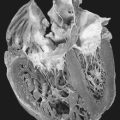87. Williams Syndrome
Definition
Williams syndrome is a rare genetic disorder that results in hypercalcemia, cardiovascular anomalies, neurodevelopmental and/or behavioral problems, and development of distinct facial features.
Incidence
The incidence of Williams syndrome is estimated to be 1:20,000, without racial, ethnic, or gender predilection.
Etiology
Unequal meiotic crossover produces interstitial deletions—notably, a deletion on band 7q11.23 near the elastin gene has been found in almost every patient with Williams syndrome.
Signs and Symptoms
• Bladder diverticula
• Bowel diverticula
• Calcified valvular aortic stenosis
• Cataract
• Coronary insufficiency
• Delayed motor development
• Dental malocclusion
• Failure to thrive
• Flat malar area
• Flat nasal bridge
• Full lips
• Gait ataxia
• Hearing loss
• Hyperactivity
• Hyperacusis
• Hypersensitivity to loud sounds or certain types of sounds
• Hypertension
• Hypoplastic nails
• Kyphoscoliosis
• Long philtrum
• Lordosis
• Mental retardation
• Microcephaly
• Periorbital fullness
• Precocious puberty
• Progressive joint contractures
• Raspy/harsh voice
• Reduced binocular vision
• Retinal vascular tortuosity
• Severe dental disease
• Severe pulmonary stenosis
• Short stature
• Short, upturned nose
• Stellate irides (starburst appearance of iris)
• Strabismus
• Supravalvular aortic stenosis (SVAS)
• Urinary frequency
• Valgus deviation of hallices
• Ventricular hypertrophy with biventricular outflow tract obstruction
• Wide mouth
• Widely spaced teeth
Medical Management
Treatment of the patient with Williams syndrome is specifically designed in response to the clinical presentation. The syndrome is evident very early after birth. Typically initial interventions address the patient’s failure to thrive, hypercalcemia, or a cardiac lesion. Nutritional manipulation may simultaneously treat failure to thrive and hypercalcemia by reducing vitamin D and calcium intake to achieve normal serum calcium levels and promote optimal growth patterns.
The patient with Williams syndrome should be monitored for development of hypertension. If hypertension does develop, it should be treated without delay.
Cardiac lesions are common in the patient with Williams syndrome. The most common such lesion is supravalvular aortic stenosis (SVAS), which is also the cause of the most frequent surgical intervention. The decision to initiate the surgical intervention depends on the patient’s cardiac symptoms, the magnitude of the pressure gradient across the supraaortic obstruction, or the presence of ischemic changes on a stress test. SVAS tends to progress over time, requiring long-term cardiac assessments.
Complications
• Bladder diverticula
• Hearing loss
• Myocardial ischemia resulting from biventricular outflow tract obstruction
• Myocardial ischemia resulting from coronary insufficiency
• Ocular problems
• Progressive heart failure
• Progressive joint contractures
• Respiratory infection
• Severe dental disease
• Severe pulmonary stenosis
• Sigmoid diverticulitis
• Sudden death
• Supravalvular aorticstenosis
Anesthesia Implications
The patient with Williams syndrome may present a significant anesthesia challenge. Several organ systems are affected by Williams syndrome; most important to the anesthetist are the effects on the cardiovascular and renal systems as well as the effects produced on the patient’s airway.
Williams syndrome patients are particularly prone to cardiac and cardiovascular anomalies, such as SVAS, peripheral branch pulmonary stenosis, and hypertension. The most disconcerting is SVAS (see Medical Management above). Before receiving any anesthetic, general or regional, the patient with Williams syndrome should undergo a very thorough cardiac evaluation. The anesthetist should obtain previous 12-lead electrocardiograms, echocardiograms, chest x-rays, and/or cardiac catheterization reports for comparison. Any of these reports not completed within the 12 months before the surgery date should be updated.
The anesthetist must strive to maintain the patient’s normal or usual resting heart rate. Avoidance of bradycardia or tachycardia and significant reductions in the systemic vascular resistance (SVR) are most important, along with maintenance of normotension (as close to what is normal for the patient as possible). Because of the strong need to avoid these possible effects, general anesthesia is likely the most appropriate anesthetic choice. Regional anesthesia, specifically subarachnoid or epidural blockades, should be avoided because of the sympathectomy it produces, resulting in significant reductions in both SVR and systemic blood pressure. The cardiovascular system of the patient with Williams syndrome should be closely monitored. The anesthetist should consider using an arterial pressure catheter, central venous catheter, pulmonary artery catheter, and/or transesophageal echocardiography to be able to more fully evaluate the patient’s cardiovascular stability perioperatively. The extent of the invasive monitoring will depend on the severity of the patient’s cardiac dysfunction along with the nature of the proposed surgical intervention.
The patient with Williams syndrome is prone to micrognathia as well as loose and/or brittle teeth—a state of generalized poor dentition that is not reflective of his or her hygienic routine or dental care. The patient’s airway should be assessed preoperatively. An underdeveloped mandible may indicate possible difficulty in securing the patient’s airway. Before obtaining consent for anesthesia, the anesthetist must fully advise the patient and/or parent or legal guardian (if the patient is a minor or mentally/intellectually incompetent) of the increased risk for dental trauma despite the anesthetist’s care, skill, and/or experience during the necessary direct laryngoscopy. It is absolutely necessary that the anesthetist have the difficult airway cart immediately at hand before induction of anesthesia.
The patient with Williams syndrome frequently has some degree of intellectual deficit or mental retardation. The level of the patient’s intellectual and emotional development must be strongly considered when deciding on premedication for anxiolysis. The anesthetist must also take into account the degree of cardiac dysfunction in the “equation” to determine the method, as well as magnitude, of premedication the patient should receive, if any. It may be most appropriate to have the parent or legal guardian accompany the patient until induction of general anesthesia is accomplished.
The patient’s kidney function should be assessed preoperatively. Hypercalcemia and hypercalciuria may predispose the patient to renal calculus formation, along with urinary tract disorders. The patient’s serum creatinine and blood urea nitrogen (BUN) levels should be obtained preoperatively for use as indicators of renal function.
The patient with Williams syndrome is predisposed to joint contractures, so the anesthetist must be acutely aware of these special needs when positioning the patient during surgery and anesthesia. Extra caution is necessary during the positioning process to ensure copious padding of extremities, bony prominences, and pressure points. Gelatin pads are preferable because they disperse pressure more effectively than do foam pads. The presence of any contractures may require considerable “creativity” on the anesthetist’s part to fulfill these needs.







